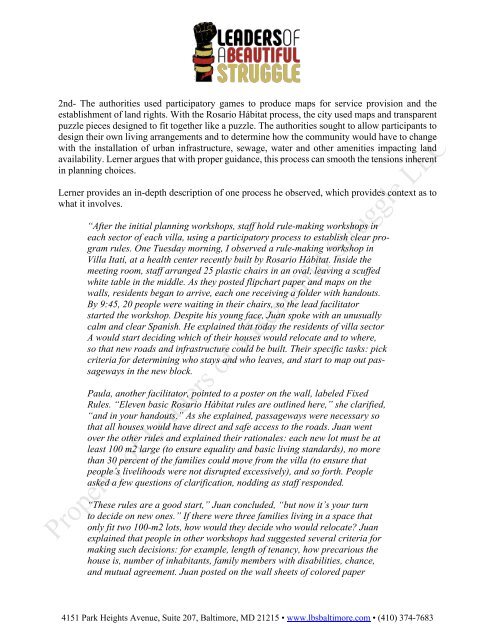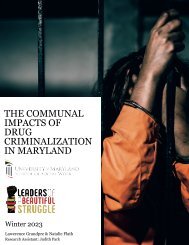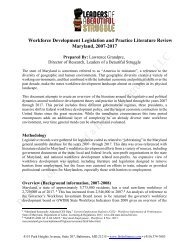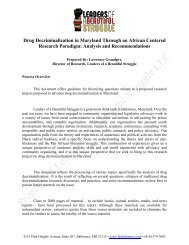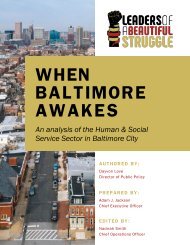Models for Participatory Budgeting
Participatory Budgeting (PB) has become a schizophrenic term, used as easily by neoliberal technocrats as it has been used by leftists seeking redistribution of wealth. As such, examining the function of any PB scheme with a critical lens is essential to determine whether it is an attempt to redistribute resources and power, or a tool to manufacture consent for the status quo and undermine/co-opt forces of resistance. While the goal of this analysis is not to delve deeply into the technical minutiae around the different processes, there is one clarification which may be useful to make at the beginning of the section. Much of what is often called PB could also be considered “participatory urban planning.” The distinction is that while budgeting denotes an explicit focus on allocating a discrete set of funds, planning seeks to take a more comprehensive survey of people's feelings, needs and problems, and generates a list of interventions based upon that feedback. Many straddle the line and include elements of both. This section will focus on processes which allocate revenue directly, will help explain why some interventions (Baltimore City Children and Youth Fund) will receive more direct attention and others (New York Cities Participatory Planning sessions) might receive less.
Participatory Budgeting (PB) has become a schizophrenic term, used as easily by neoliberal technocrats as it has been used by leftists seeking redistribution of wealth. As such, examining the function of any PB scheme with a critical lens is essential to determine whether it is an attempt to redistribute resources and power, or a tool to manufacture consent for the status quo and undermine/co-opt forces of resistance.
While the goal of this analysis is not to delve deeply into the technical minutiae around the different processes, there is one clarification which may be useful to make at the beginning of the section. Much of what is often called PB could also be considered “participatory urban planning.” The distinction is that while budgeting denotes an explicit focus on allocating a discrete set of funds, planning seeks to take a more comprehensive survey of people's feelings, needs and problems, and generates a list of interventions based upon that feedback. Many straddle the line and include elements of both. This section will focus on processes which allocate revenue directly, will help explain why some interventions (Baltimore City Children and Youth Fund) will receive more direct attention and others (New York Cities Participatory Planning sessions) might receive less.
- No tags were found...
You also want an ePaper? Increase the reach of your titles
YUMPU automatically turns print PDFs into web optimized ePapers that Google loves.
2nd- The authorities used participatory games to produce maps <strong>for</strong> service provision and the<br />
establishment of land rights. With the Rosario Hábitat process, the city used maps and transparent<br />
puzzle pieces designed to fit together like a puzzle. The authorities sought to allow participants to<br />
design their own living arrangements and to determine how the community would have to change<br />
with the installation of urban infrastructure, sewage, water and other amenities impacting land<br />
availability. Lerner argues that with proper guidance, this process can smooth the tensions inherent<br />
in planning choices.<br />
Lerner provides an in-depth description of one process he observed, which provides context as to<br />
what it involves.<br />
“After the initial planning workshops, staff hold rule-making workshops in<br />
each sector of each villa, using a participatory process to establish clear program<br />
rules. One Tuesday morning, I observed a rule-making workshop in<br />
Villa Itatí, at a health center recently built by Rosario Hábitat. Inside the<br />
meeting room, staff arranged 25 plastic chairs in an oval, leaving a scuffed<br />
white table in the middle. As they posted flipchart paper and maps on the<br />
walls, residents began to arrive, each one receiving a folder with handouts.<br />
By 9:45, 20 people were waiting in their chairs, so the lead facilitator<br />
started the workshop. Despite his young face, Juan spoke with an unusually<br />
calm and clear Spanish. He explained that today the residents of villa sector<br />
A would start deciding which of their houses would relocate and to where,<br />
so that new roads and infrastructure could be built. Their specific tasks: pick<br />
criteria <strong>for</strong> determining who stays and who leaves, and start to map out passageways<br />
in the new block.<br />
Paula, another facilitator, pointed to a poster on the wall, labeled Fixed<br />
Rules. “Eleven basic Rosario Hábitat rules are outlined here,” she clarified,<br />
“and in your handouts.” As she explained, passageways were necessary so<br />
that all houses would have direct and safe access to the roads. Juan went<br />
over the other rules and explained their rationales: each new lot must be at<br />
least 100 m2 large (to ensure equality and basic living standards), no more<br />
than 30 percent of the families could move from the villa (to ensure that<br />
people’s livelihoods were not disrupted excessively), and so <strong>for</strong>th. People<br />
asked a few questions of clarification, nodding as staff responded.<br />
“These rules are a good start,” Juan concluded, “but now it’s your turn<br />
to decide on new ones.” If there were three families living in a space that<br />
only fit two 100-m2 lots, how would they decide who would relocate? Juan<br />
explained that people in other workshops had suggested several criteria <strong>for</strong><br />
making such decisions: <strong>for</strong> example, length of tenancy, how precarious the<br />
house is, number of inhabitants, family members with disabilities, chance,<br />
and mutual agreement. Juan posted on the wall sheets of colored paper<br />
4151 Park Heights Avenue, Suite 207, Baltimore, MD 21215 • www.lbsbaltimore.com • (410) 374-7683


